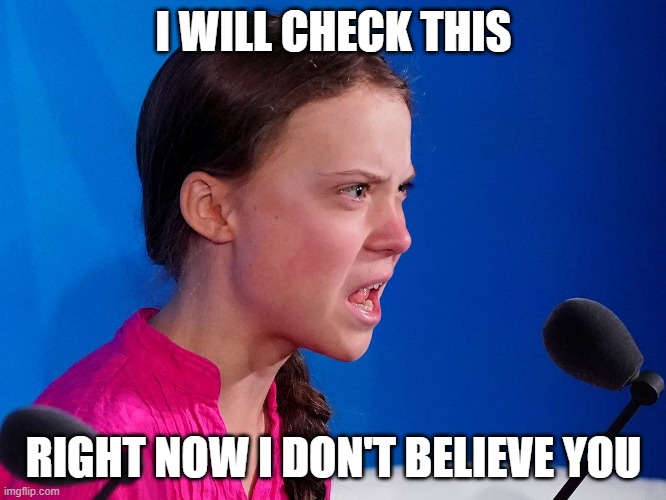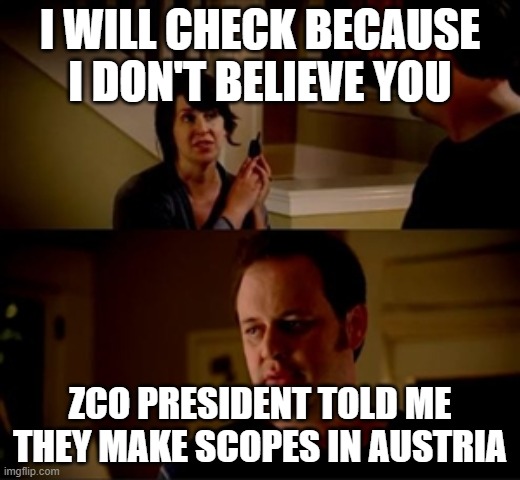I'm a professional photographer, at age 73, started photography when I was about 12, got serious @14, started getting 5 bucks shooting photos of the neighbors kids. My whole life I've ate and slept photography, and when my photography got serious, I had the opportunity to own/use Carl Zeiss lenses; some great Carl Zeiss lenses.
I'm experienced w/lenses and camera gear, and I'm doing my due diligence on learning how to utilize/operate a riflescope. The laws of optics don't change between lenses and riflescopes, but the mechanics are obviously different. One optic produces images, the other aids in coming up w/ballistics solution.
I've kept up w/this discussion, and I have to speak up, and speak up w/what I know about some of the things being discussed optics wise.
Modern optics flow from Carl Zeiss via their innovation in lens design and their utilization of modern glass. In all my years of buying/using Carl Zeiss optics I was amazed at the genius behind some of their lenses. Not only have they produced the best lenses, they jealously guard their legacy, one thing in the Carl Zeiss DNA as the best, would be their striving for excellence as opposed to resorting to cheating/manipulating to win at any kind of comparison whether it would be in comparing lenses or rifle scopes. That's just not in them to do that or ever consider doing it.
Optics is a branch of physics, the laws of optics/physics change from year to year, but lenses have gotten better because of innovation and Carl Zeiss was behind much of that innovation. Back in history, R&D regarding lens making, was holding one crude lens element in each hand, and putting your eye behind them as you move the glass closer to/farther away from each other.
James Petzval introduced math into lens making.
Then came the advent of computer power to come up w/more involved lens formulas/an increasing number of lens groups, which don't work until the advent of advanced lens coatings which keep light from bouncing off the front lens element. The modern lens coating has a lot to do w/the performance of a lens, via enabling optical engineers to come up w/more involved lens formulas/lens groups.
Carl Zeiss showed everybody the way to modern lens making, there's no way they would cheat or manipulate to gain an advantage their legacy has already achieved through genius.
As to "eyeballing" optics, I can recount my recent cataract surgeries. Having bad cataracts, I had implants which were also toric lenses to elimnate my astigmatism. The surgeries on my left and rt. eye were a month apart, and I could readily see the difference between the vision of either eye.
The vision in my rt. eye was now bright/clear equaling the vision of a 30 yr. old, and the vision through my left eye was dark and fuzzy. Looking through my cameras w/my rt. eye, gave me an image quality Different that looking through than same camera/lens combination w/my left eye until I got the left eye operated on.
Biometrics document how the pupils of your eyes narrow as you age. Optics have an entry and an exit pupil; your eye is an optic, and the diameter of its entry pupil narrows in relation to the exit pupil of a lens/riflescope you're looking through, so that what you think you're seeing through an optic, may not relflect the true capability/performance of that optic.
If the entry pupil of your eye has narrowed in relation to the exit pupil of the optic you looking through, that optic is going to appear darker to you than someone else looking through that same optic.
Don't get me wrong, if you're 25, no cataracts, no astigmatism because your eyeballs are shaped like basketballs, and you've got 20-15 vision, you should benefit/be able to perceive the nuance/detail from the best optics, until you get older.
I'm mentioning what little I know, because of a couple of issues w/what's been mentioned here In this discussion.



